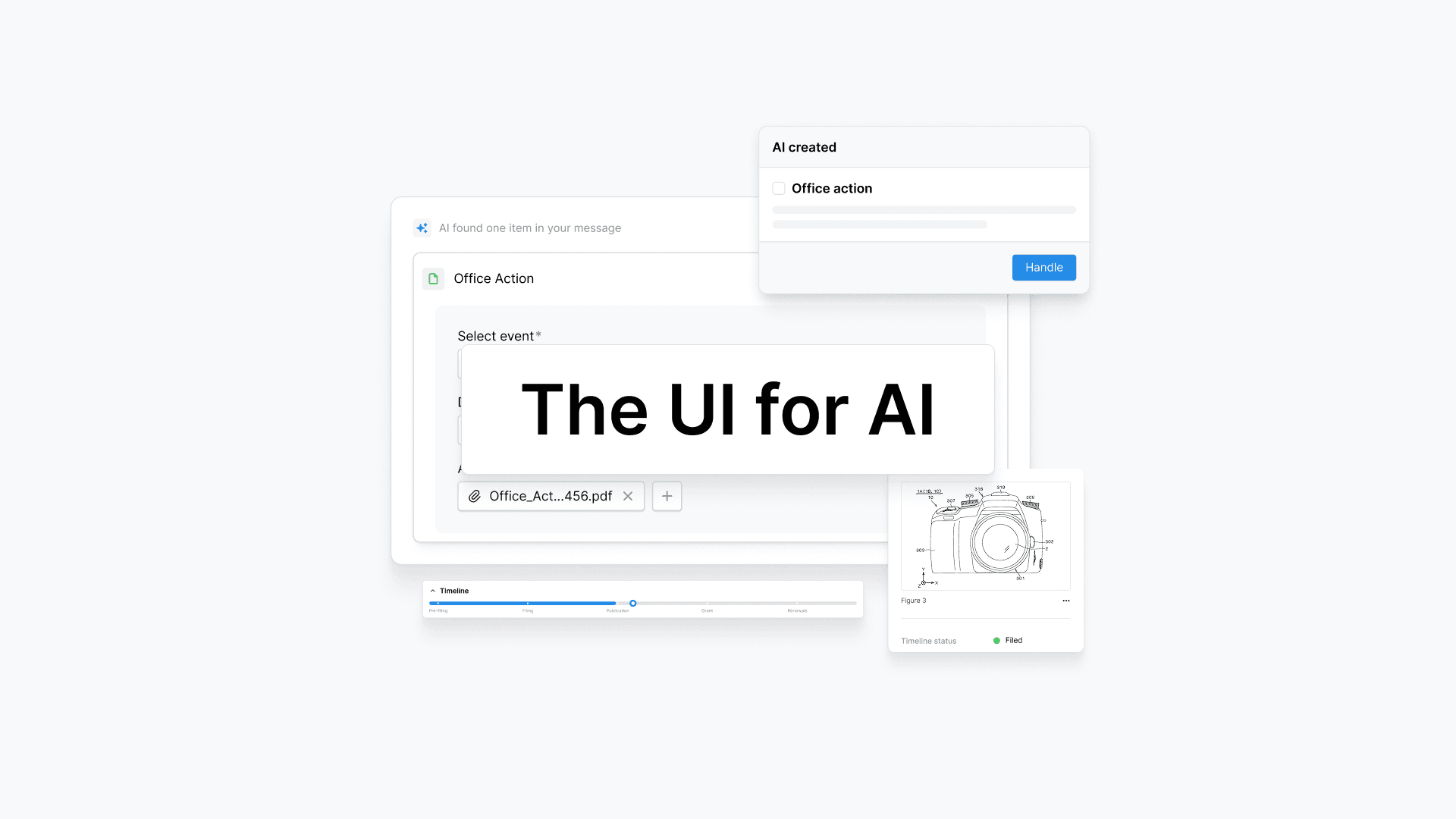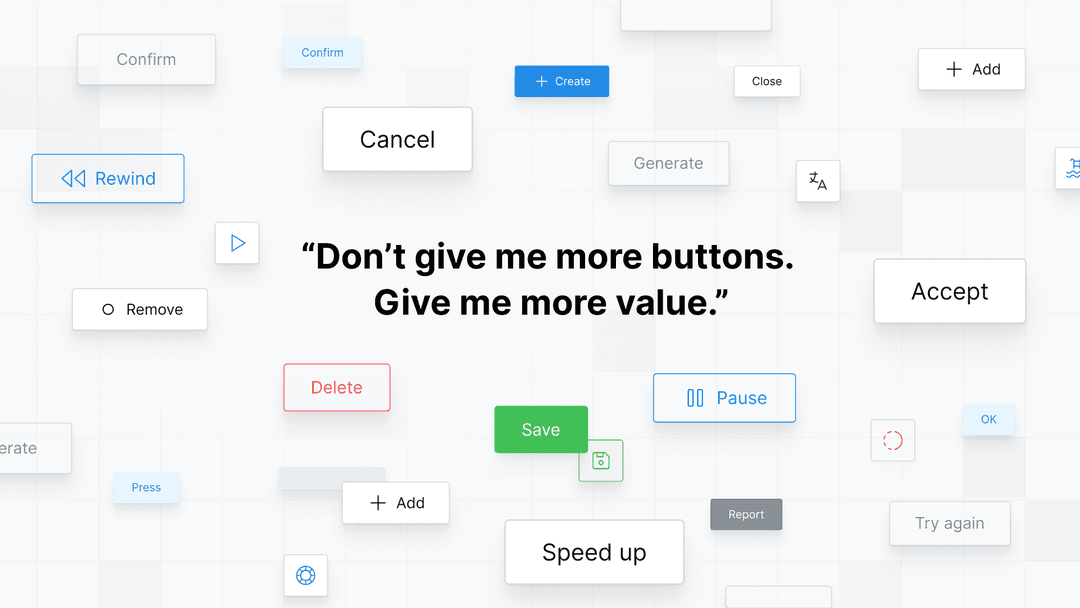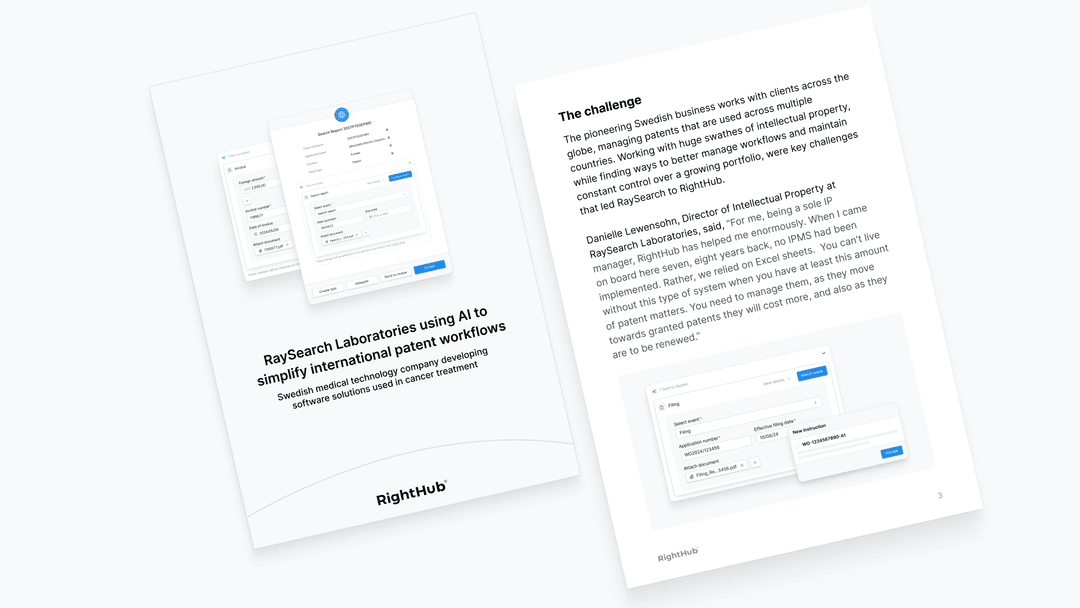Knowledge
Designing the Future: The UI for AI

By Rohit Saluja, Head of AI at RightHub from Anaqua
It has been two decades since the ‘Netscape Moment’, when a Californian start-up went public and exposed the world's population to the possibilities of the World Wide Web. Within a short period of time, the internet had gone from a toy for those in the tech world to an indispensable tool for the masses.
In many ways, that is where Artificial Intelligence (AI) sits right now. It has exploded as part of the common consciousness of the online population, who are now using it for everything from analysing datasets to designing marketing imagery, in fact, 75% of knowledge workers already use AI at work.
In raw numbers, studies suggest that 1.6 billion people will show up online by 2030, and they will approach AI as natives of the technology. With moves such as OpenAI making its premium ChatGPT Plus subscription free for college students in the U.S. and Canada, it highlights the fact that just having AI will very quickly stop being enough as competition intensifies - it has to be cutting-edge in its design and in how the user interacts with it – and that’s where we are focused at RightHub from Anaqua.
Where is Generative AI now?
RightHub from Anaqua remains the first and only IPMS built from the ground up with AI in mind, helping reduce mundane tasks, getting started quicker and driving more value for your clients. But how is generative AI currently being used across all industries? And how is it being deployed across a rapidly growing number of use cases?
• AI Assistants: Always ready at your command, these AI assistants respond directly to your requests and follow clear instructions.
• AI add-ons: Enhancements that quietly boost your tools, offering input without changing how you work.
• AI Copilots: Partners in the process, they anticipate your next move and offer suggestions, while you stay in control.
• AI Background Agents / Ambient Agents: Constantly running in the background, they gather context and optimise your workflow without interrupting it.
• AI Workers: Task-oriented AI assistants built for independence. Hand them a job, and they’ll take it from start to finish with minimal input.
Once upon a time, AI systems such as ours at RightHub from Anaqua may have played just one of these roles, as the effects of any one of these systems on an operation was so noticeable that it would be leaps and bounds ahead of what came before. However, now the growth of AI has so rapidly become part of this and all other industry backbones, we are striving to find ways to employ all of these different AI user experiences. If your product fails to do that, you’re probably shipping yesterday’s user experience (UX).
How to design the future of user experience for generative AI
When designing the next generation of AI user interface (UI), at RightHub from Anaqua, we look at a huge number of factors to help continue to set apart our offering within the IP industry, as an increasing number of competitors strive to bolt on AI applications to their products. We are not just relying on our standing as the only IPMS that is built around AI but are developing and increasing what tools we can offer. We recently introduced AI Docketing, which automatically matches incoming documents and correspondence to the correct case files using our proprietary AI agentic workflows built for legal and IP data; maintaining privacy, auditability, and control. Now, IP Professionals can cut manual administration from 8-12 minutes to just one click, transforming how IP teams manage deadlines, documents and data.
When those tools are being designed for use by clients across the IP industry, it is important to include features that are going to develop the user experience. One way that our user interface designers do this is by embracing unpredictability, which is always a possibility with the infinite uses and requirements that occur in day-to-day operation. For example, we ensure that our UI includes edit, veto and try-again flows, for searches and requests that can be incredibly complex, so that users have flexibility and can avoid delays in a hectic IP industry. We also ensure that AI is designed to ask qualifying questions before carrying out requests in cases where confusion may occur, as users often prefer to answer one more question with greater guarantees of successful task completion than they do restarting a process from scratch, costing them time that they can't afford.
An important factor that our AI is built around, in terms of its operation by the IP industry, is an element we call “Human-AI handoff”, which is something that is best highlighted by our newly introduced AI docketing tool. AI auto-extracts docketing details from incoming emails and then allows the user to either accept or ignore. This decision-making process is still important, especially in such a critical industry as IP, as AI is still evolving to the point at which it can be trusted to be 100% accurate. AI can still sometimes suffer with hallucinations, where an LLM generates outputs that are inaccurate or misleading, even though they might appear plausible. This means that for many clients, it is still important to include this level of human sign-off, which we have achieved with an intuitive side-by-side layout in the UI, with the suggestion on the left-hand side and the raw message on the right. Both on the same screen, but with clear differences between the two options, this is one of many examples of how we are ensuring that our leading UI is simple, clear, understands the limitations of AI and yet sets itself apart from other models.
The Next Frontier
AI UI is no longer just about buttons and layouts – it's about trust, intent and adaptability. It is about going beyond the existence of AI and its potential, to provide a user experience that replaces human interaction, streamlining and simplifying processes without needing to review the AI’s work after the fact. Increasingly, it is about front-loading the process so that questions come before, not after, the point of AI-Human handoff, and that's what we are continuing to do at RightHub from Anaqua. Being the first and only IPMS to be built around AI is one thing, and something we are always proud of, but continuously being the first to create new advantages - to find new ways to streamline the lives of IP professionals - is where we will continue to set ourselves apart in the bright future of AI.


